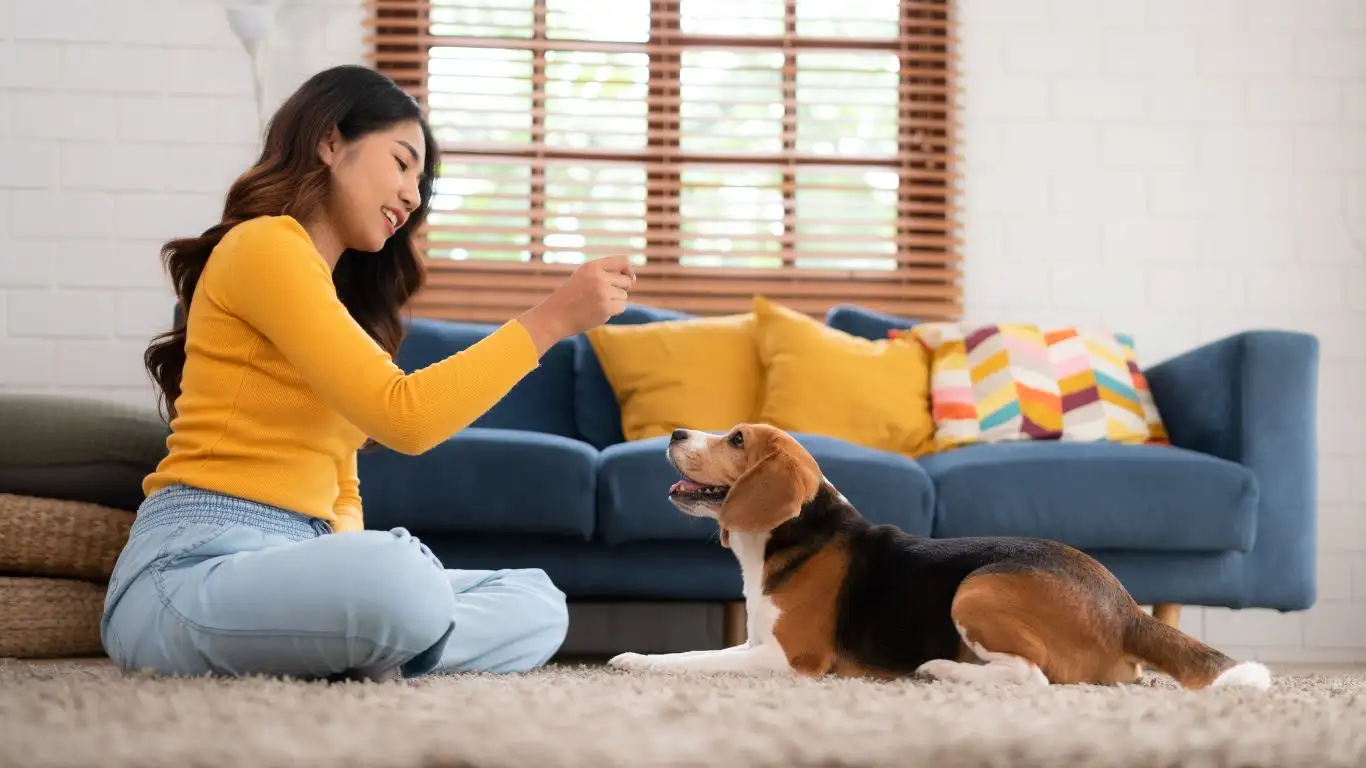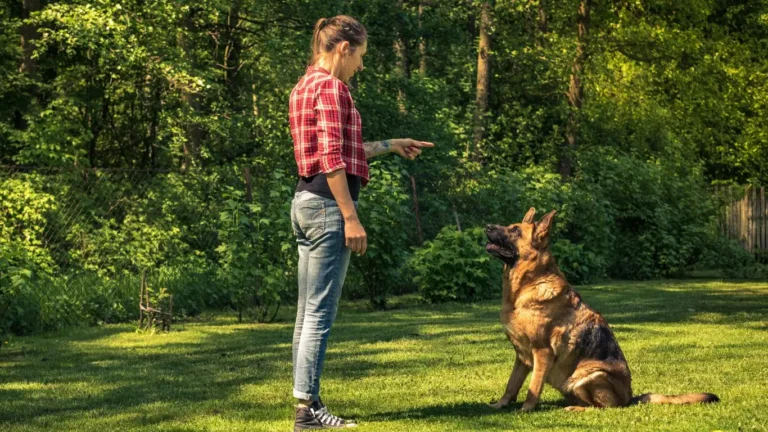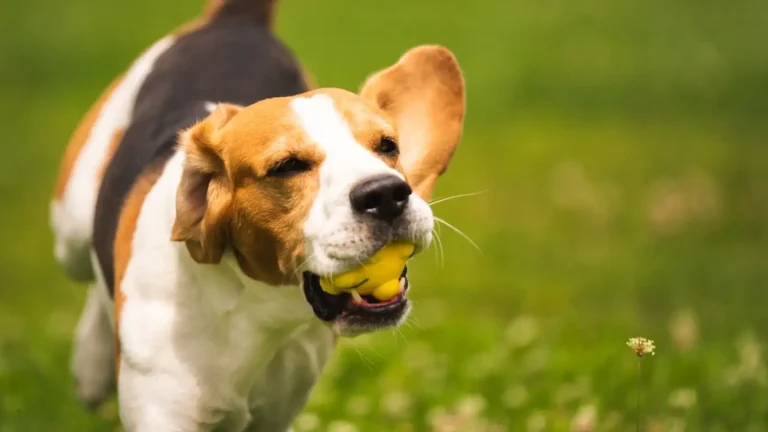How to Train a Dog to Be Patient Around Kids for Safer Playtime
As someone who’s spent a good chunk of life surrounded by dogs and kids — often at the same time — I’ve learned just how crucial patience is. When parents ask me how to train a dog to be patient around kids, I don’t hand them a one-size-fits-all answer. Dogs, like humans, come with their own personalities, past experiences, and comfort zones. But with the right mix of positive reinforcement, trust-building, and structure, it’s absolutely possible to help your dog become a calm, gentle presence around children. And hey, it’s not just about obedience — it’s about creating a peaceful environment for everyone, paws and all.
Understanding Why Patience Matters
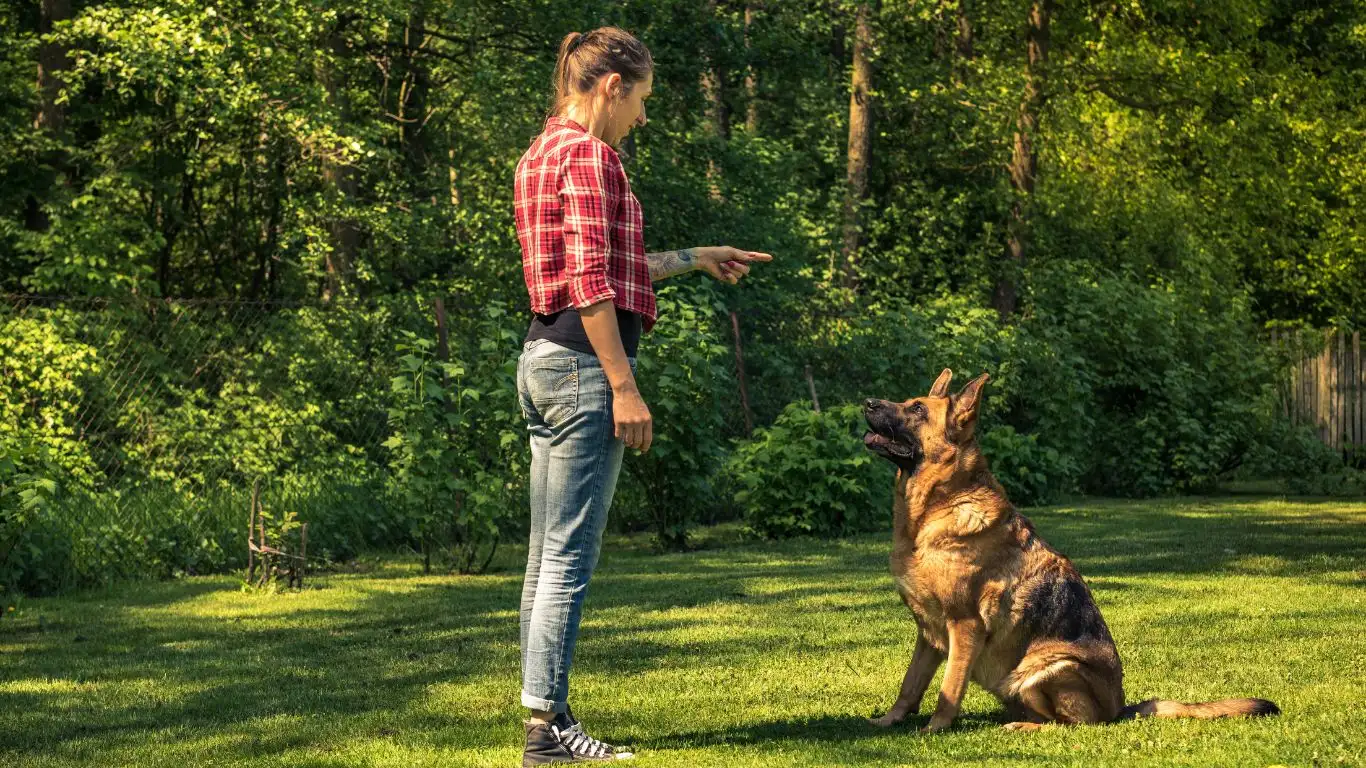
If you’ve ever watched a toddler poke, squeal, or suddenly zoom past your dog, you know just how overwhelming that can be — for the dog, I mean. It’s not that dogs aren’t tolerant, but they do need help adjusting to unpredictable little humans. I’ve trained therapy dogs that now happily snuggle with kids at hospitals, but it didn’t happen overnight.
Whether your dog is high-energy, cautious, or somewhere in between, teaching patience around children is about more than just good behavior. It’s about safety, mutual respect, and helping your dog feel confident, not cornered.
Start with a Calm Foundation
I always tell my clients: if your dog isn’t calm in everyday situations, don’t expect them to be zen around kids. Before introducing children into the mix, make sure your pup has a good grasp on basic commands like sit, stay, and leave it. These aren’t just tricks — they’re lifelines when your dog’s unsure how to react.
- Practice calm greetings — no jumping, no licking frenzy.
- Reward stillness — treat your dog when they choose to lie down quietly.
- Desensitize to sudden movements — simulate kid-like behavior (safely) in short sessions.
Setting Up for Success at Home

Your home should feel like a safe zone for your dog, especially if kids are part of the picture. Dogs need a space they can retreat to — think of it as their chill-out zone. One of my therapy dogs, Bella, a sweet-natured Golden Retriever, had a favorite corner with a soft mat where no one was allowed to bother her. Even the kids learned: “Bella’s spot means Bella-time.”
Create Boundaries and Respect Zones
Dogs thrive on routine and clearly defined boundaries. Here’s what works:
- Use baby gates to control interactions until your dog is ready.
- Teach kids how to interact respectfully — no tail pulling, no shouting, no chasing.
- Never force interactions. Let your dog choose when to engage.
When both kids and dogs have rules to follow, mutual respect blossoms. And believe me, kids get a kick out of being part of the training process when it’s framed as a “special job.” I’ve seen 5-year-olds turn into the best junior trainers with just a little guidance.
Read Your Dog’s Signals

This might be the most overlooked part of training: listening to what your dog is trying to say. I’ve had clients come to me worried their dog is “bad around kids,” when in reality, the dog was just overstimulated or scared and nobody noticed the early signs — lip licking, yawning, walking away.
Patience Begins with Understanding
Keep an eye out for your dog’s stress signals. When you respond to them consistently, your dog learns they’re safe — that you’ve got their back. This builds trust faster than any treat can.
- Watch for body language — tail position, ears back, avoidance behavior.
- End interactions on a positive note, before your dog feels overwhelmed.
- Reward calm behavior in the presence of kids, even if it’s just a short moment.
In one of my early sessions, I worked with a rescue dog named Luna who had no prior exposure to children. At first, she’d bolt the second a kid entered the room. We didn’t rush her. Over time, with patient conditioning, Luna learned that little footsteps meant treats, praise, and eventually — belly rubs. Now? She’s a total kid magnet.
Introducing Kids and Dogs the Right Way
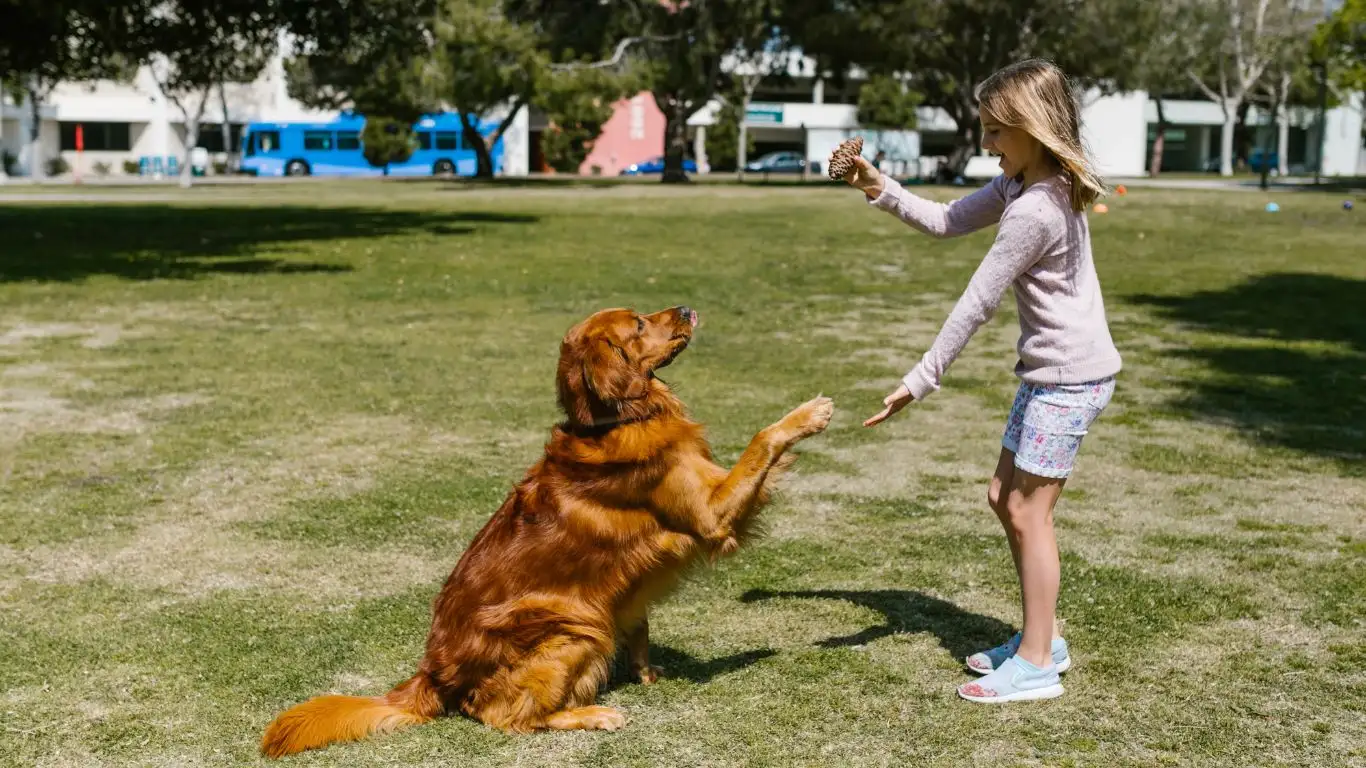
Now that your dog has some foundational skills and feels secure at home, it’s time to start bridging the gap with children. Whether you’re preparing for your own child or your dog’s just around kids regularly — like neighbors, friends, or nieces and nephews — the first impression matters. A lot.
One trick I love? Keep early introductions short and super low-key. I once worked with a client whose dog, Max, was overly curious but a bit jumpy. We started with something as simple as having the child calmly toss treats from a few feet away. No touching, no crowding. Max learned that the tiny human meant good things — without pressure.
Keep Things Predictable
Dogs thrive on patterns. And kids? Well, they don’t always stick to scripts. So you’ve got to help your dog predict what’s coming. Here’s how:
- Start in a neutral, low-stim environment — avoid chaotic playdates at first.
- Have the child stay seated while the dog approaches on their own terms.
- Use a leash or long line to guide your dog without creating tension.
Make sure you’re narrating the experience in a calm, upbeat tone. I often say things like, “Hey buddy, look who’s here!” — your voice can be an anchor for your dog in a moment of uncertainty.
Games and Training That Build Patience
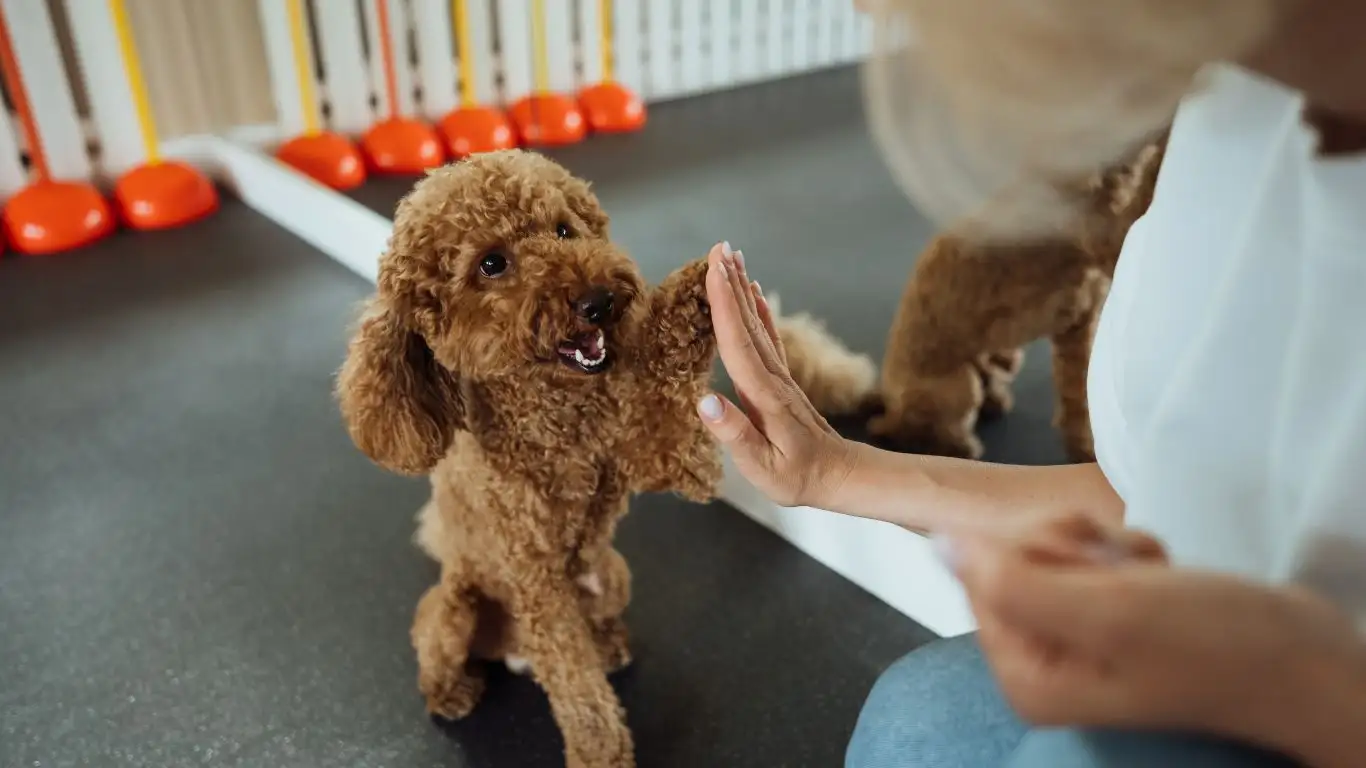
This is where things get fun. Training doesn’t have to feel like a boot camp — especially when you’re working on how to train a dog to be patient around kids. In fact, I’ve found that incorporating playful exercises not only strengthens the bond between dog and child, but also reinforces calm behavior in a way that feels rewarding to both sides.
Try These Easy Patience-Building Activities
- Treat & Wait: Have your dog sit, and let the child slowly offer a treat — but only once the dog stays calm for a few seconds. Gradually increase the wait time.
- Follow the Leader: Let the child give simple commands like “sit” or “lie down,” and reward successful responses. Make it a game!
- Red Light, Green Light: This one’s hilarious and super effective. Kids call out “green light!” to let the dog walk (on leash) and “red light!” to pause. Keeps both species focused and engaged.
In my sessions, I always supervise these games closely at first. One time, little Ava got a bit too excited during “Red Light,” and her pup Charlie needed a reset. Totally normal! A quick pause, a few deep breaths (from both of them), and we were back on track.
Using Positive Reinforcement the Smart Way
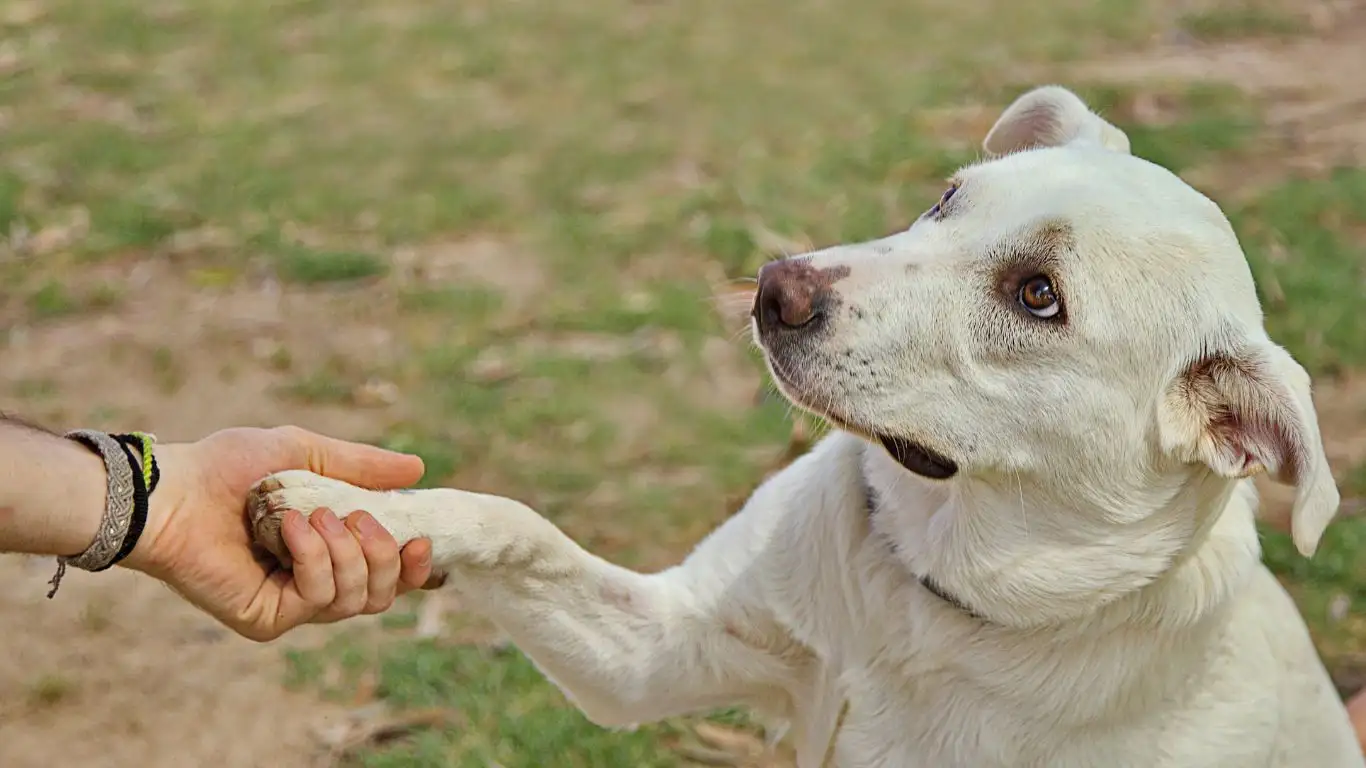
If there’s one golden rule in dog training, it’s this: reward what you want to see more of. But timing and technique matter. When you’re working on patience, especially around high-energy kids, your dog needs crystal-clear feedback that calm behavior = reward.
What Reinforcement Looks Like in Real Life
- Treats — Use high-value rewards like cheese, freeze-dried liver, or whatever makes your dog’s eyes light up.
- Verbal praise — A cheerful “Yes!” or “Good boy/girl!” goes a long way, especially when paired with a soft pat or treat.
- Timing — Reward in the moment. Don’t wait. If your dog just stayed calm as a kid zipped past, that’s your window!
I’ll never forget this gentle old Lab, Moose, who started out very unsure around children. We used a clicker to mark every moment he stayed still while kids played nearby. Over time, Moose learned: stillness brings snacks, and kids aren’t so bad after all.
Involve the Whole Family
Training your dog to be patient isn’t just a one-on-one thing — it’s a team sport. The more consistent everyone is, the faster your dog learns. If mom rewards calmness, but dad lets the dog jump during play, the mixed signals confuse your pup.
Assign Roles and Keep It Simple
- Kids can be “calm treat givers” — under adult supervision, of course.
- Adults manage space and pacing — ensuring breaks when needed.
- Use the same commands and rules across the board to avoid confusion.
When the whole crew is on board, results come faster — and your dog feels like part of a stable, supportive pack. I’ve seen entire families bond deeper through this process, especially when they make it fun and celebrate the small wins together.
Handling Setbacks and Staying Patient Yourself
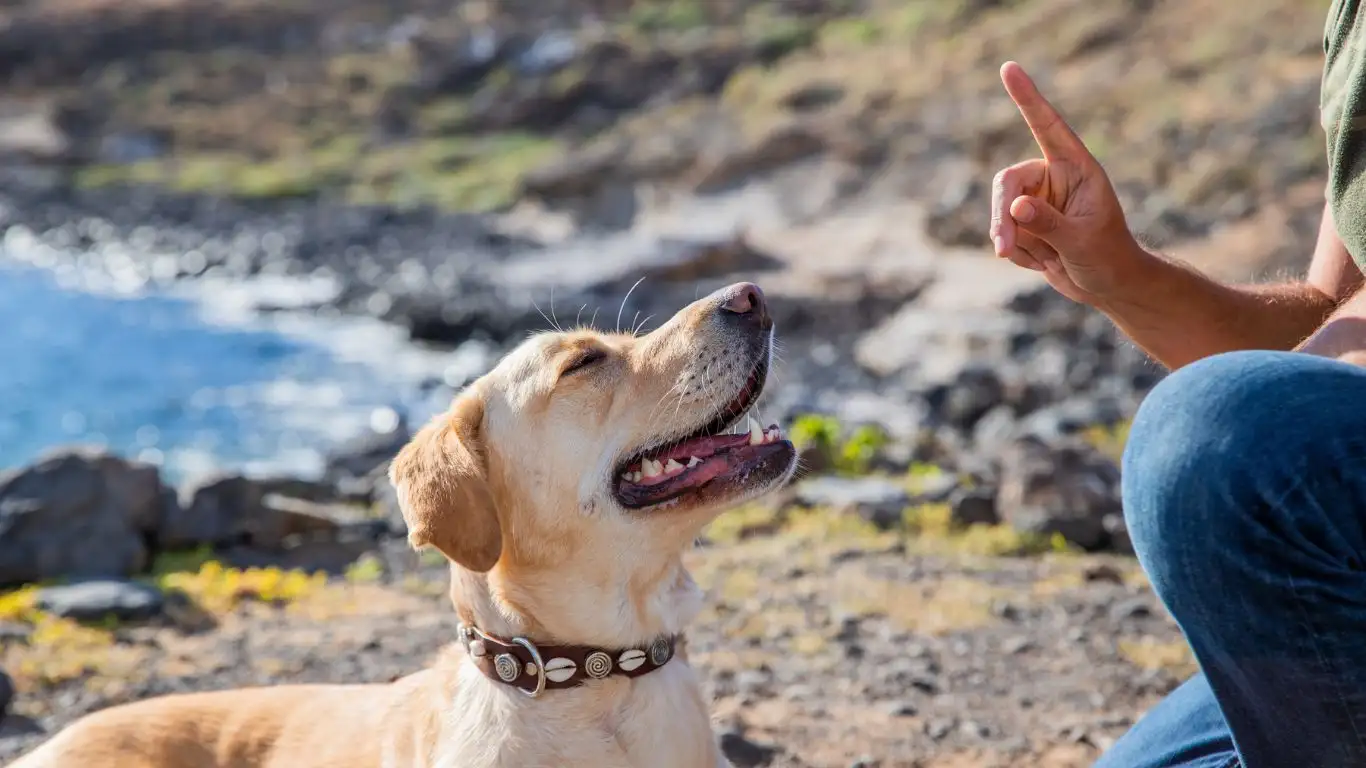
Let’s be real—training a dog to be patient around kids isn’t always a smooth ride. I’ve had days when even the most well-trained pups test their limits, and moments when little humans get overexcited or nervous. What I’ve learned through years of working as a Canine-Assisted Therapy Trainer is that your own patience is just as important as your dog’s.
Dogs are incredibly intuitive and pick up on our energy. If you’re stressed or frustrated, your dog feels it too, which can make patience training tougher. So, whenever things don’t go as planned, take a deep breath and remind yourself this is a process, not a race.
Practical Tips for Managing Challenges
- Pause and reset: If your dog shows signs of stress—like pacing, yawning, or avoiding the child—step back. Give your dog some space and time to decompress before trying again.
- Celebrate small wins: Even a few seconds of calm in a high-energy situation is progress. Celebrate it and build on it.
- Modify the environment: Sometimes it’s about setting your dog up for success. If the living room is too chaotic, try training sessions in a quieter room or outside.
- Keep sessions short: Kids and dogs both have limited attention spans. Short, frequent training moments often work better than long, exhausting sessions.
In one case, a family was struggling because their young daughter kept chasing the family dog, Rocky. We introduced short, supervised “calm play” breaks and taught the child to use a calm voice and gentle touches. Rocky started to relax more quickly, and eventually, the excitement turned into peaceful companionship.
Socialization Beyond the Home

Once your dog is showing consistent patience at home, it’s time to broaden the horizons. Real-world socialization helps reinforce all those lessons. Kids at the park, family gatherings, or even casual visits to friends with children can be great opportunities.
How to Prepare for Outings
Every new environment comes with new challenges and distractions. Here’s what I recommend:
- Bring essentials: Treats, favorite toys, and maybe a familiar blanket or mat to help your dog feel secure.
- Plan short visits: Keep outings manageable. Gradually increase the length and complexity of the interactions.
- Monitor body language closely: It’s easier to notice stress signals in a new setting if you’re paying attention.
- Keep a leash handy: Control is key until you’re confident your dog can handle the environment calmly.
I’ve taken many therapy dogs to schools where the noise and movement are intense. The key to success is slow exposure paired with plenty of positive reinforcement. Remember, every dog’s pace is different—never rush this step.
Long-Term Benefits of Teaching Patience Around Kids
Patience training isn’t just about immediate safety or avoiding chaos. It’s about setting your dog and family up for a lifetime of joyful, stress-free interactions. From personal experience, dogs trained with patience tend to have lower anxiety, stronger bonds with their humans, and better overall well-being.
Children learn valuable life skills too — empathy, responsibility, and respect for animals. I’ve seen shy kids gain confidence by helping teach their dog patience, and hyperactive dogs mellow as they learn to settle down.
Keep the Momentum Going
- Regular refresher sessions: Keep practicing calm commands and patience games as your dog ages.
- Involve new family members: When new kids or pets join the household, start slow and apply the same principles.
- Adapt as needed: Dogs’ needs change over time—adjust your training to fit their energy and health.
By investing time and love into teaching your dog how to be patient around kids, you’re creating a safer, happier home for everyone involved. I’ve been honored to witness countless transformations where once-jumpy pups become the gentle giants every parent hopes for.
References
Disclaimer
The information provided in this article is based on personal experience and professional training in canine-assisted therapy. It is intended for educational purposes and should not replace personalized advice from a qualified dog trainer or veterinarian. Always consider your dog’s individual needs and health conditions when implementing new training techniques.
